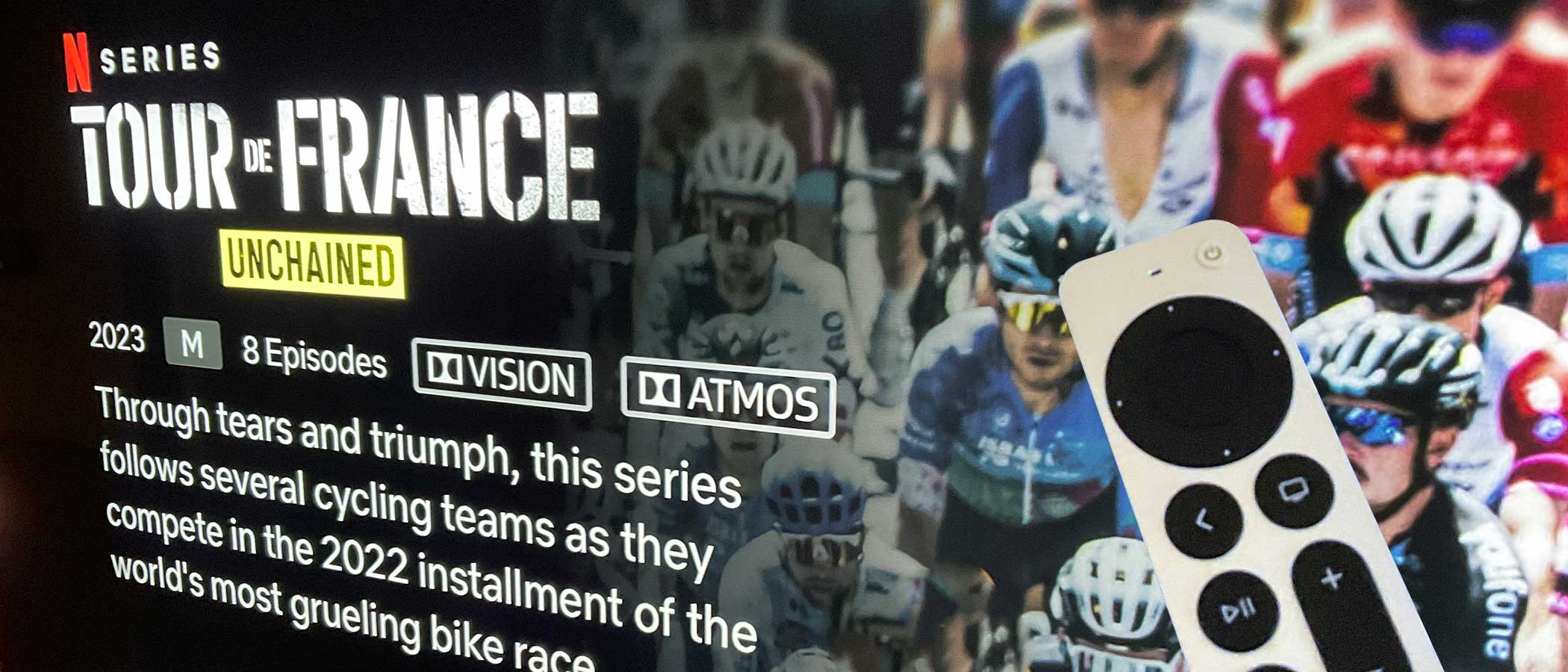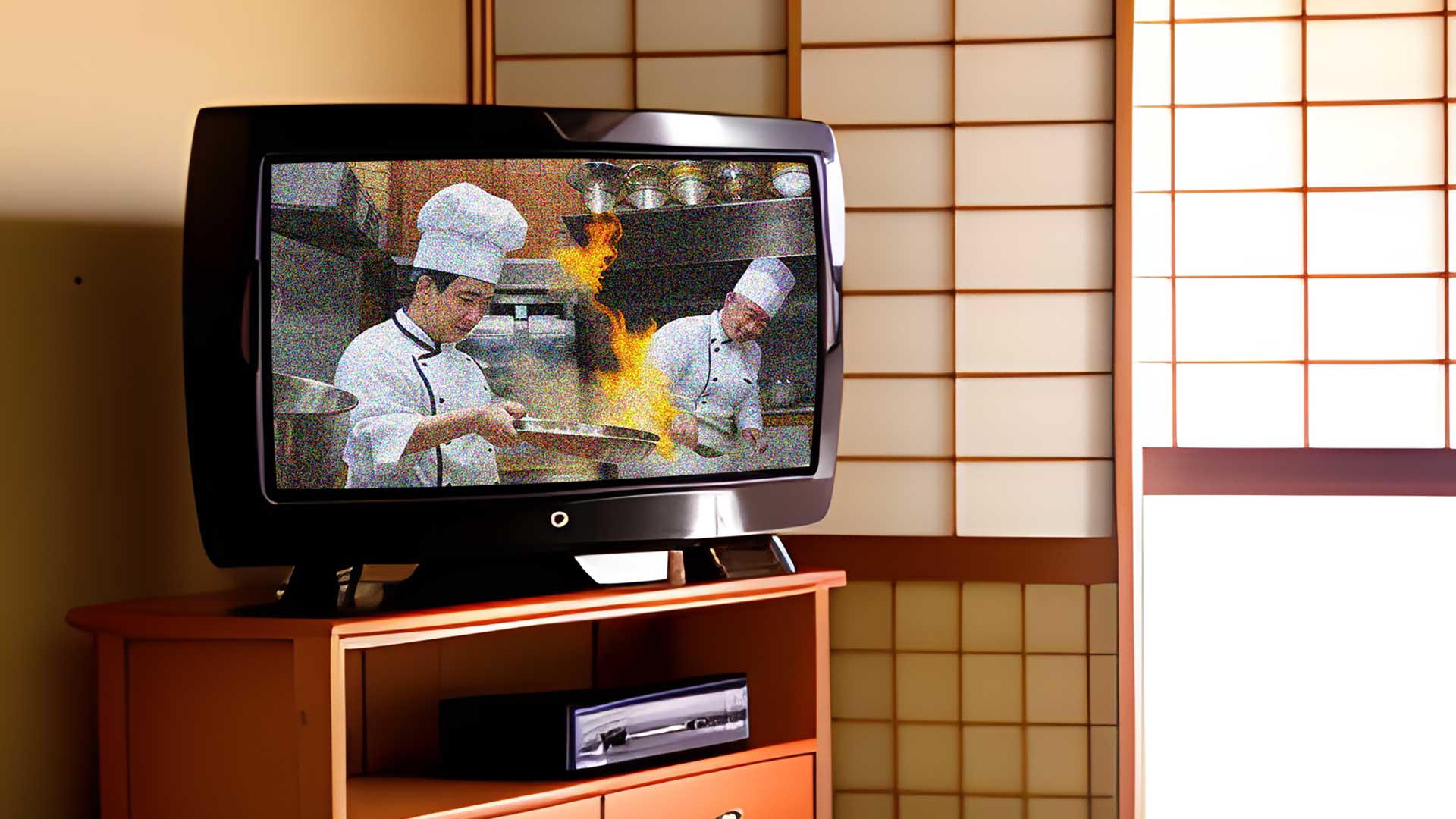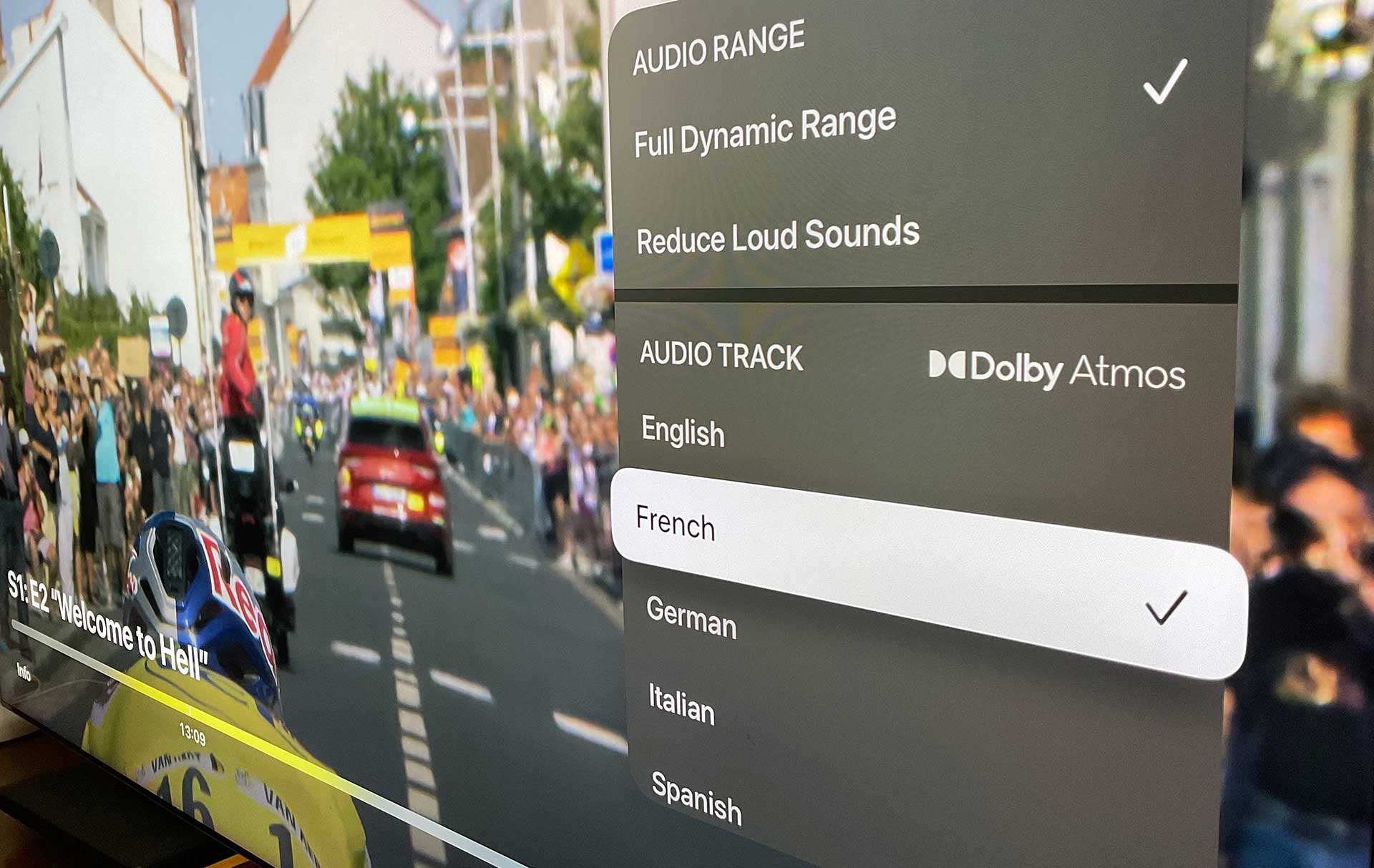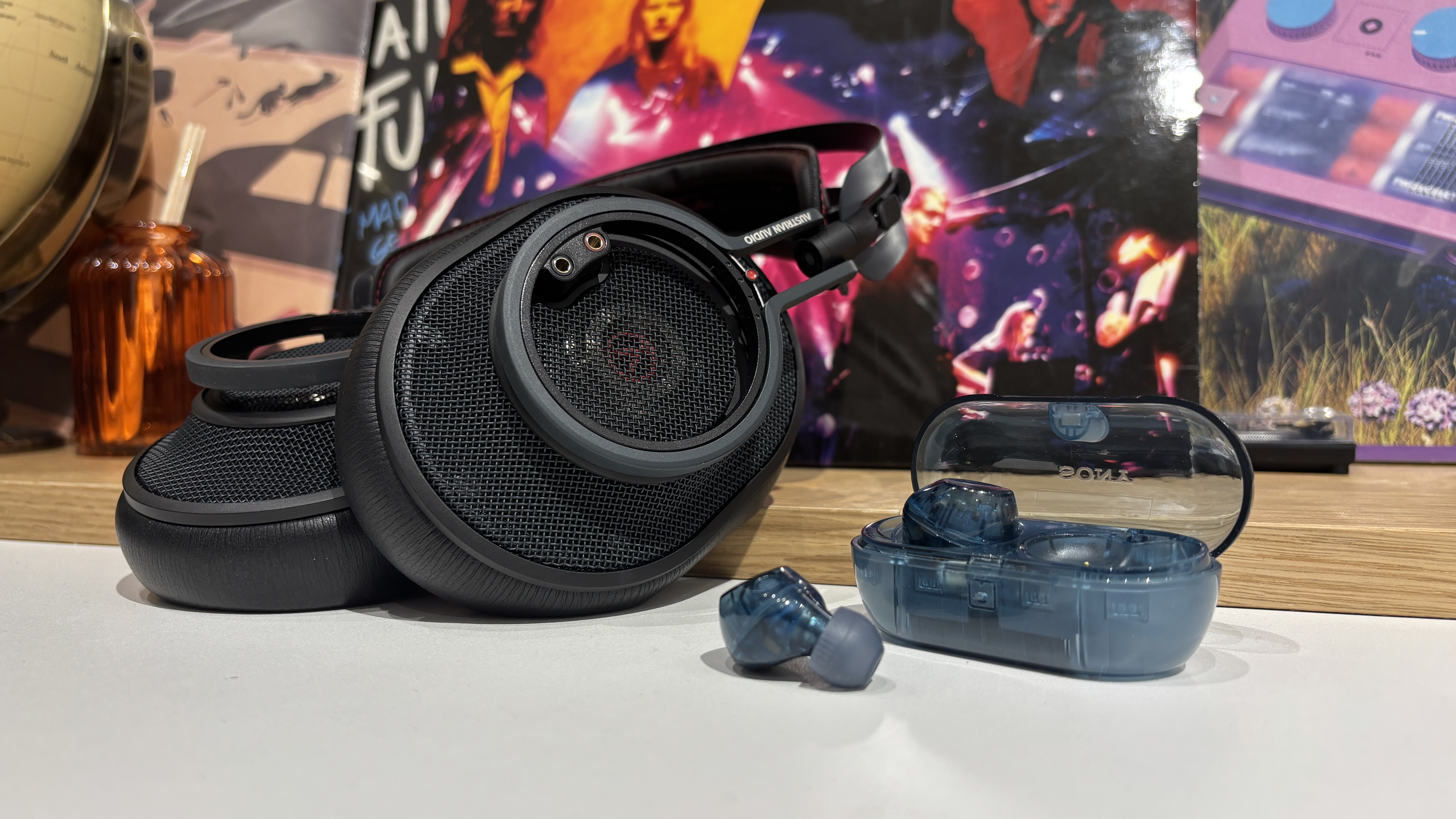I changed one setting on Netflix’s Tour De France Unchained – and it brought the whole show to life
Égalité, fraternité, they say, but the English and French soundtracks of Tour de France Unchained do not treat their audience equally


This feature originally appeared in Sound+Image magazine, Australian sister publication to What Hi-Fi?. Click here for more information on Sound+Image, including digital editions and details on how you can subscribe.
It’s no secret that Tour De France Unchained on Netflix aims to do for cycling what the untouchably magnificent Formula 1: Drive To Survive has done for motor racing, serving up stunning visuals and full Dolby Atmos soundtracks in such an irresistible adrenaline-fuelled rush that even the Americans are now flocking to get trackside at the expanding number of US Grands Prix.
But there’s something different about Tour de France Unchained, a difference which comes with the territory.
The show is unapologetically bi-lingual, headlined as “Une Serie NETFLIX” and featuring both French and English-speaking cyclists and commentators throughout. This duality is made clear from the start; indeed most of the opening sequences, and most of the Netflix rolling trailer, focus dominantly on French teams and commentators.
When French is being spoken, those selecting the English soundtrack get the usual translation method used in news and interviews: a few seconds of the original French audio track, which is then’ ducked’ under an English translation read by a voice-over artist.
“You are soldiers,” it begins. “You are warriors.”
But the voiceovers are very Oxford English and fail entirely to capture the merest soupçon of the original French fervour. When one poor VO artist is assigned the translation “We’re going to win this f*** stage!!…”, he reads it more like Prince William than the wild yelling Frenchman we see onscreen banging the roof of his team car.
I found this delivery distracting enough to disperse much of the drama being created by the fine visuals and the rest of the Atmos soundtrack.
Get the What Hi-Fi? Newsletter
The latest hi-fi, home cinema and tech news, reviews, buying advice and deals, direct to your inbox.
Nevertheless, I do like the idea of language equality; given the race title we should be grateful for a look-in at all, really. And as the show goes on, there are whole sections in English… but then it’s back to the strange translators again.

The art of the dub
I’ve got nothing against dubbed foreign shows in general, but translating shows in this way is a difficult art.
At its most excellent, dubbing can truly elevate a show. Who could imagine Iron Chef without the dubbing team? The voiceover artists there are great entertainers in their own right (though I don’t believe half the stuff they say comes from the original dialogue).
Far further back I have happy memories from my youth of White Horses, Belle & Sebastian and The Flashing Blade, all dubbed from who-knows-what original language, and perhaps most of all, Monkey, so influential a series in its time that it is my firm belief that Pigsy, Sandy and all manner of Monkey magic seeded Buddhist ‘right thought’ and ‘right deed’ deep within a generation of watching Western kiddies.
I remember as a teenager being thrilled to discover that the Monkey voiceovers were done at BBC Pebble Mill in Birmingham, where my father worked, and it turned out we knew the English scriptwriter, David Weir*, not that I recall getting any inside goss about the show.
I did, however, spend many happy hours in my Dad’s office watching the internal video stream from the studio where Basil Brush shows were being recorded. Basil’s below-desk puppeteer (spoiler, sorry!) was no mere voiceover artist; he was a true actor. Basil never broke character even between takes, always looking around, chatting to the camera crew, even when his front pedestal was removed and you could see the arm going up him. How that guy never got cramp holding Basil aloft for hours like that, I do not know. I do remember him replenishing his energy by drinking, unrecognised, in the BBC bar, post or possibly before the show, it being the 1970s and all; something would tickle his fancy and the whole bar would fall silent as that laugh rang out – “Aha Ha Ha Ha Ha!” – his genuine laugh. Though no “boom boom”.
[* My family in the UK is now seeding doubt as to whether 'our' David Weir is 'that' David Weir. I always thought it was, but I am fully aware of the unreliability of memory from last week, let alone when I was 13, so there may be two BBC David Weirs. I do have a picture of our David Weir, so if anyone has and wishes to share a picture of Monkey's David Weir, we can put this controversy to bed.]
[3 days later - Turns out 'Monkey' is on Netflix, where the credits do mention David Weir, but also that the VOs were recorded in London (though I should check the later seasons). This throws my whole anecdote into doubt, a reminder of the vagaries of early memory in the slightly elderly. But I'm 100% confident on the Basil Brush stuff...]
Anyway, back to Netflix five decades later. At our house, I confess with some regret, the subtitles are nearly always on. My marvellous missus is one of those people who like the subtitles up, even when we’re listening to a movie at reference level with a large, pretty high-end centre-channel speaker pointing directly at her head, ensuring crystal clear and pretty much unmistakable dialogue – but she wants subtitles as well, so subtitles we have.
And watching the cycling show, I realised that with subtitles I didn’t need people translating with a voiceover – I wanted to hear the French people speaking French.

So I paused my Apple TV and did the kinda random tapping and sliding thing required of an Apple TV remote to access the audio and subtitle menus.
I kept the missus’s subtitles on but switched to the ‘French’ audio track.
This changed the show entirely. Even the trailer was now far more dynamic and dramatic; this is the way to watch this show.
Then I realised something odd...
Inégalité de langage
We were listening to the French soundtrack, but what happened when the English chunks of the show came up? Presumably I’d now hear some French voiceover people replacing the English dialogue?
Nope – it stayed in English. The ‘French’ soundtrack was actually native French, and also native English. A dub-free zone.
Pondering this asymmetry, I can only conclude that the French producers of the show believe most French viewers will be smart enough either to understand both original languages or to put their English subtitles on.
Whereas English viewers, on the whole, are not so smart and are more linguistically challenged, they think. So they get a dubbed version.
I thought about having a little rant about this unequal treatment for what one suspects will be an English-speaking majority of the show’s viewers. But after due consideration, I decided that they are probably right.
However, if you want to enjoy Tour De France Unchained at its best, its most dramatic, and its most original, seek out the French soundtrack and turn on the English subtitles.
Unless, of course, you’re French, in which case you’re probably smart enough not to read an article like this in the first place.
MORE:
See all our Australian reviews from Australian Hi-Fi and Sound+Image magazines

Jez is the Editor of Sound+Image magazine, having inhabited that role since 2006, more or less a lustrum after departing his UK homeland to adopt an additional nationality under the more favourable climes and skies of Australia. Prior to his desertion he was Editor of the UK's Stuff magazine, and before that Editor of What Hi-Fi? magazine, and before that of the erstwhile Audiophile magazine and of Electronics Today International. He makes music as well as enjoying it, is alarmingly wedded to the notion that Led Zeppelin remains the highest point of rock'n'roll yet attained, though remains willing to assess modern pretenders. He lives in a modest shack on Sydney's Northern Beaches with his Canadian wife Deanna, a rescue greyhound called Jewels, and an assortment of changing wildlife under care. If you're seeking his articles by clicking this profile, you'll see far more of them by switching to the Australian version of WHF.
-
RichSM It's a similar story with , an absolutely terrifying 2007 Spanish horror movie. If you watch it with the English dub it just breaks the immersion because you keep getting distracted by the picture and audio not matching. If you watch with Spanish audio and English subtitles it's definitely the best way.Reply
For example: CcW7jLYKxAQView: https://www.youtube.com/watch?v=CcW7jLYKxAQ -
Jez Ford Reply
Thanks Rich - haven't watched that, I'll give it a go. With subtitles! It's handy that Netflix seems to remember your preference by SHOW, not universally across Netflix. e,g, whenever I go back to Tour de France, it knows I want the French with subtitles, but it doesn't then play everything else in French!RichSM said:It's a similar story with , an absolutely terrifying 2007 Spanish horror movie. If you watch it with the English dub it just breaks the immersion because you keep getting distracted by the picture and audio not matching. If you watch with Spanish audio and English subtitles it's definitely the best way.
For example: CcW7jLYKxAQView: https://www.youtube.com/watch?v=CcW7jLYKxAQ
